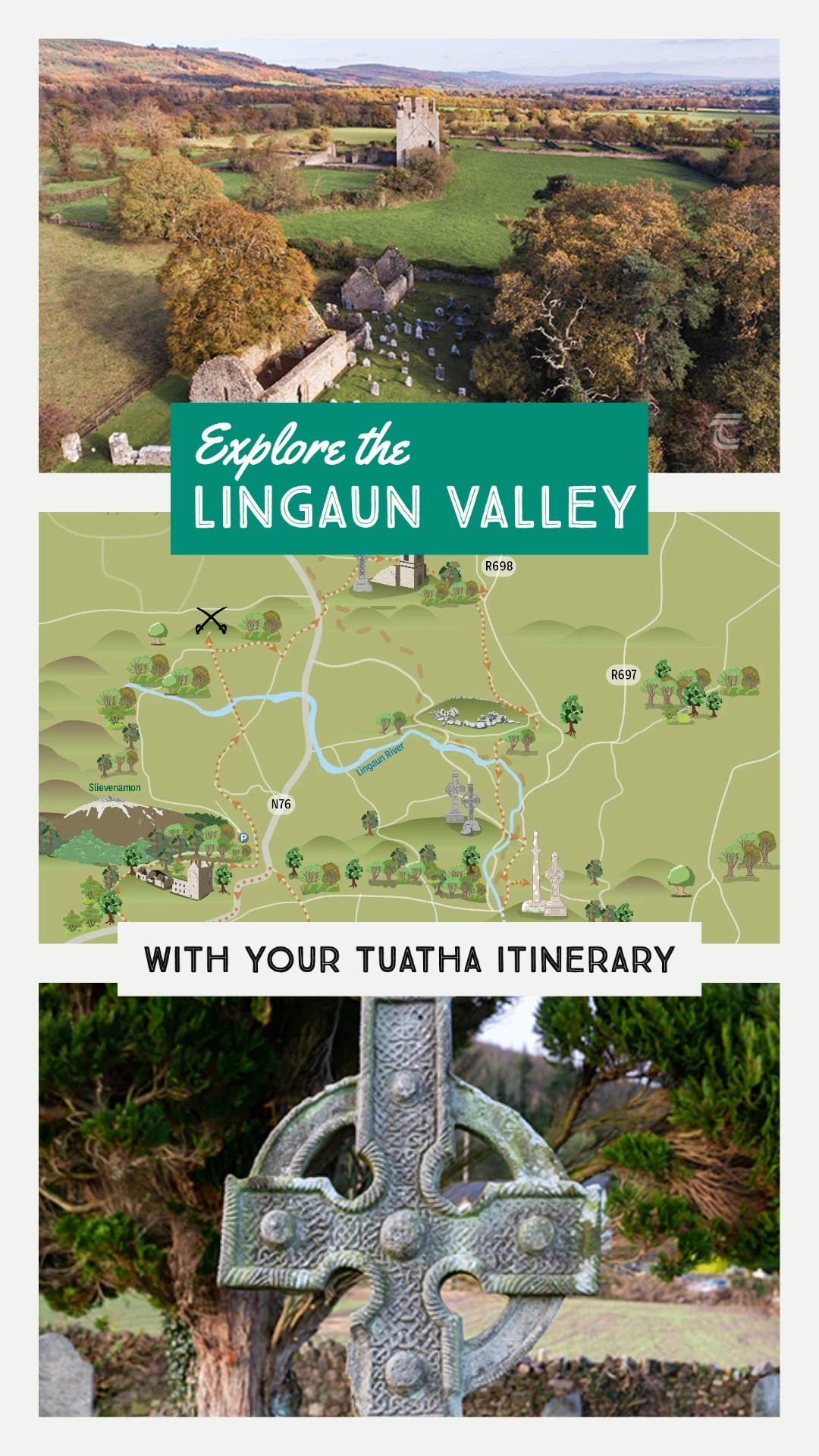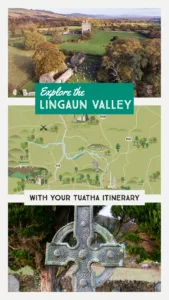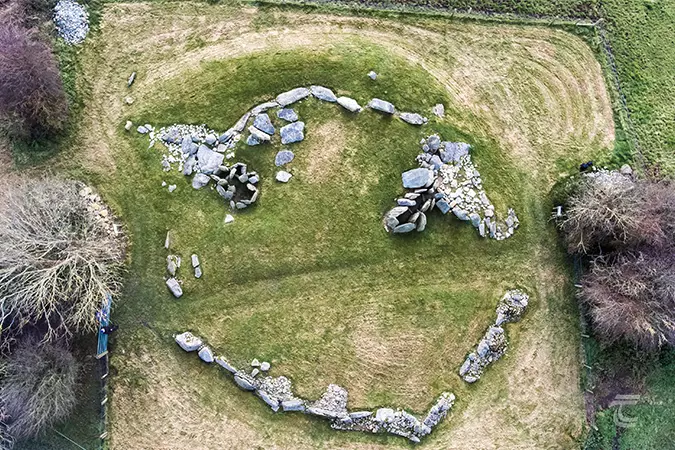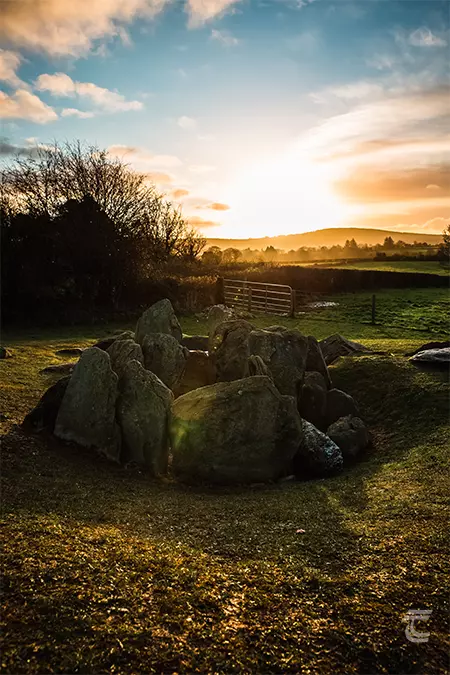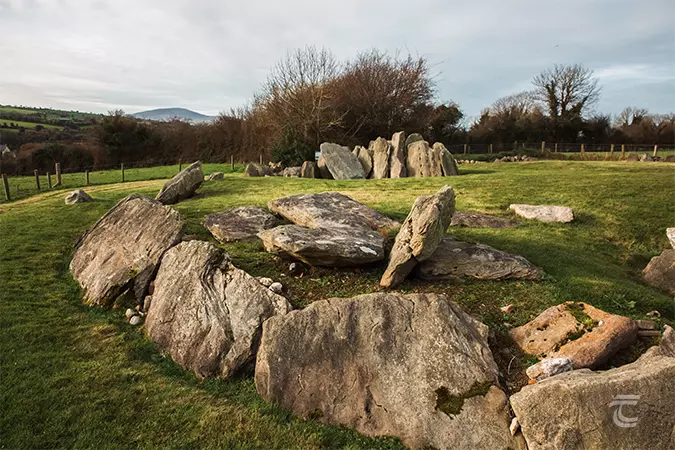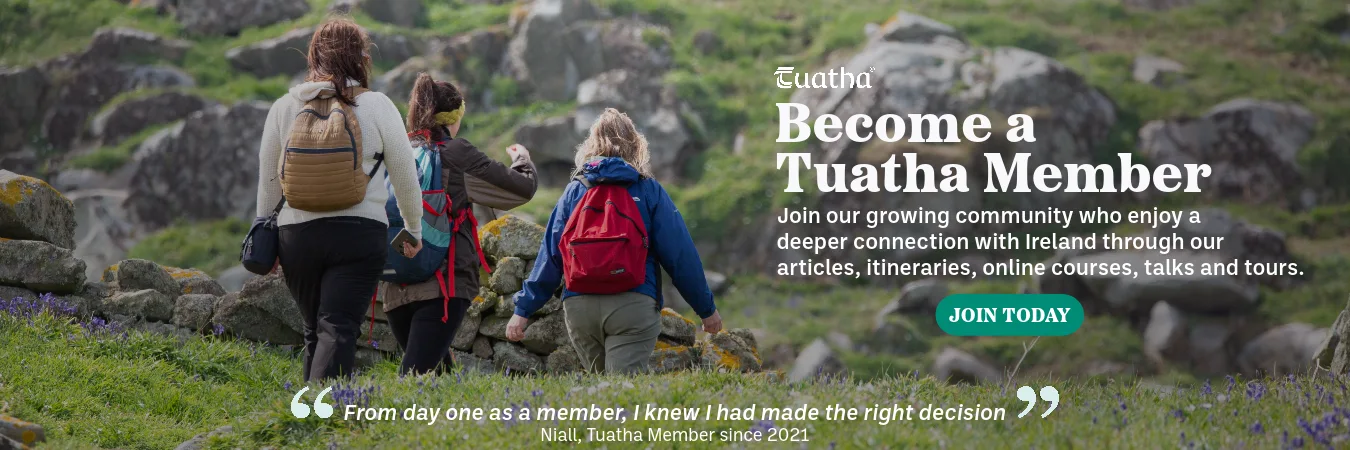Knockroe Passage Tomb
Knockroe Passage Tomb is located in a picturesque setting on the slopes above the Lingaun River. The site dates to around 3000 BC and has many similarities with the far more famous examples at Newgrange, Knowth and Dowth in the Brú na Bóinne complex in County Meath, albeit on a considerably smaller scale. During its heyday in the fourth millenium BC, the tomb would have appeared as an earthen mound surrounded by large kerbstones, with two stone-lined passageways – one in south-west and the other in the south-east of the mound.
Many of the stones lining the passageways of these tombs at Knockroe are highly decorated with megalithic art such as spirals, hollowed ‘cup marks’, and zigzags. You can still find them in their original locations, and it is impossible not to wonder about the meaning of the art: was it purely decorative or did it have a deeper symbolism, and what messages does it convey?
In another parallel with Newgrange, Knockroe is also aligned to the Winter Solstice. The eastern tomb is aligned with the sunrise, and the western tomb is aligned with the sunset on that day that marks a key changing point of the year.
The tomb was excavated in a series of research digs by Professor Muiris O’Sullivan in the 1990s. The excavations revealed that the tomb was constructed on a prepared platform that countered the natural slope of the ground. The tomb was made up of boulders at the base, with smaller stones forming the cairn on top. There appears to have been a phased development of the monument. The eastern passage appears to be earlier, with the western added when the tomb was enlarged at a later time. Cremated human remains were discovered in both passageways along with bone and antler pins, beads, pendants and fragments of pottery.
For practical information about visiting this site Click Here
Knockroe Passage Tomb is located in a picturesque setting on the slopes above the Lingaun River. The site dates to around 3000 BC and has many similarities with the far more famous examples at Newgrange, Knowth and Dowth in the Brú na Bóinne complex in County Meath, albeit on a considerably smaller scale. During its heyday in the fourth millenium BC, the tomb would have appeared as an earthen mound surrounded by large kerbstones, with two stone-lined passageways – one in south-west and the other in the south-east of the mound.
Many of the stones lining the passageways of these tombs at Knockroe are highly decorated with megalithic art such as spirals, hollowed ‘cup marks’, and zigzags. You can still find them in their original locations, and it is impossible not to wonder about the meaning of the art: was it purely decorative or did it have a deeper symbolism, and what messages does it convey?
In another parallel with Newgrange, Knockroe is also aligned to the Winter Solstice. The eastern tomb is aligned with the sunrise, and the western tomb is aligned with the sunset on that day that marks a key changing point of the year.
The tomb was excavated in a series of research digs by Professor Muiris O’Sullivan in the 1990s. The excavations revealed that the tomb was constructed on a prepared platform that countered the natural slope of the ground. The tomb was made up of boulders at the base, with smaller stones forming the cairn on top. There appears to have been a phased development of the monument. The eastern passage appears to be earlier, with the western added when the tomb was enlarged at a later time. Cremated human remains were discovered in both passageways along with bone and antler pins, beads, pendants and fragments of pottery.
For practical information about visiting this site Click Here
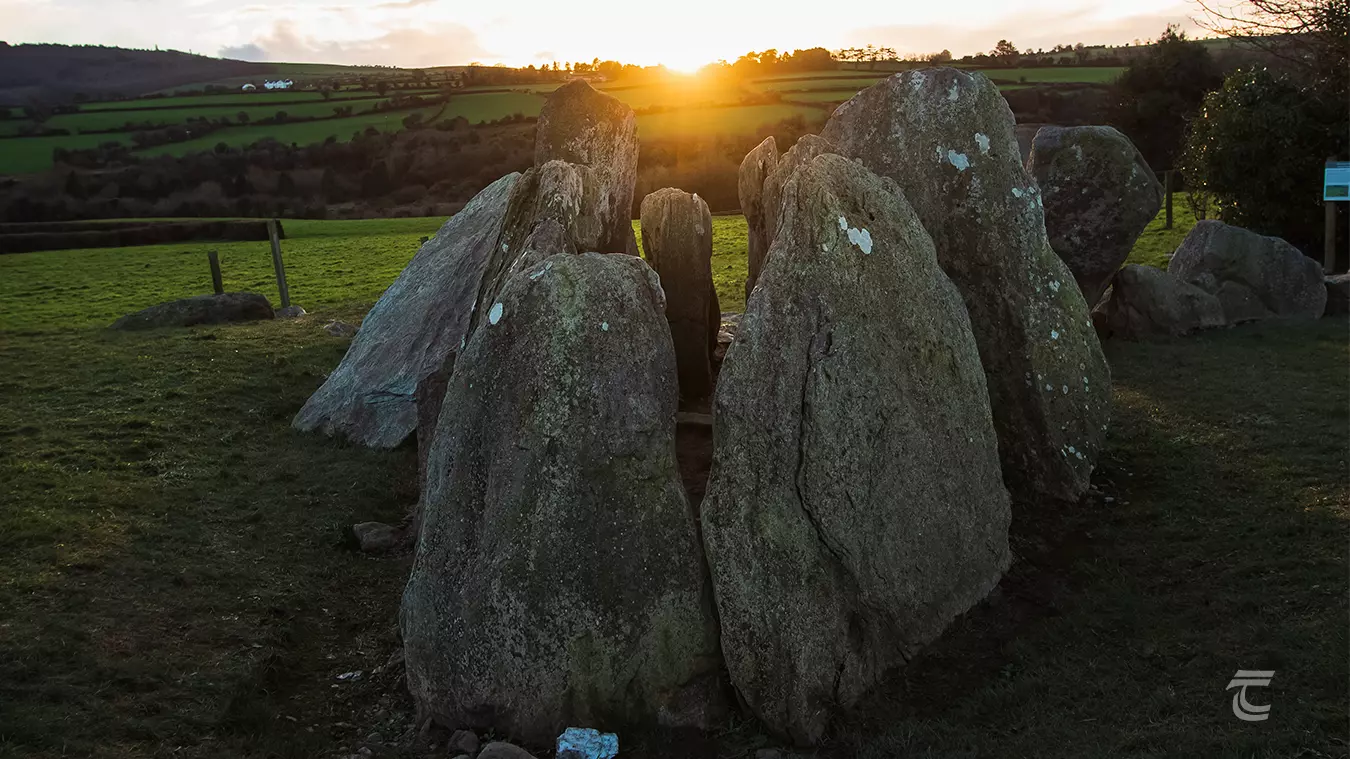
Solstice sunset at Knockroe Passage Tomb • Kilkenny
The Knockroe Winter Solstice
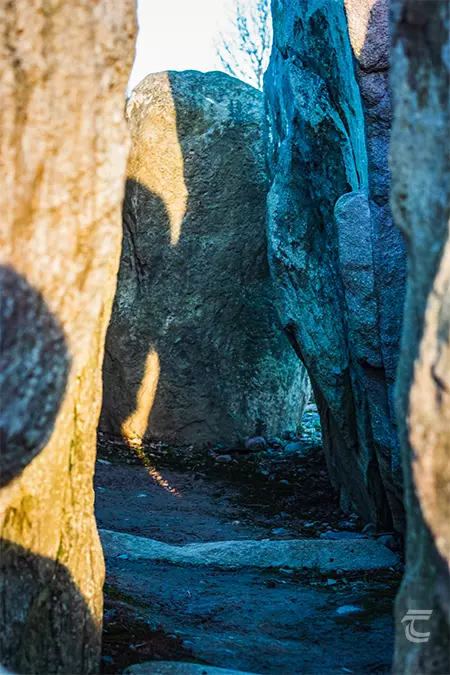
Light in the chamber • Kilkenny
Like all of our Neolithic passage tombs, Knockroe shouldn’t be thought of as an isolated monument. It is part of a wider prehistoric landscape in the Lingaun Valley that may be centred on the large tomb on the summit of Slievenamon. The name Knockroe derives from an Cnoc Rua meaning ‘the Red Hill’, perhaps referring to the distinctive dark red soil of the locality, though it is also known as ‘The Caiseal’ locally. As well as a wealth of prehistoric monuments, the Lingaun Valley also has ancient monasteries with beautiful high crosses, castles, churches and more.
One of the truly special things about Knockroe is that it has a dual Winter Solstice alignment, with the eastern passageway aligned with the rising sun, and the western passageway aligned to the setting sun. The Neolithic builders of Knockroe were some of our earliest farmers in Ireland, so the knowledge of the passage of the seasons was critically important for their life. Few days were as tangible and important as the Winter Solstice, as it marked the shortest day of the year – from here each day would grow longer as life and Spring returned. Imagine how dramatic it would have seemed to those early farmers to see the inner recesses of this great tomb illuminated once again. Today, the experience still draws a crowd. Members of the local community gather for both dawn and sunset at Knockroe, to watch the light move up the ancient passageways once more. If you are lucky to be in attendance, Prof. Muiris O’Sullivan, the archaeologist who excavated the site, is often there to talk about the significance of the monument. It is always a warm and friendly experience with mulled wine and home-made mince pies. But at the critical point a hush and thrill of excitement builds as the community share the experience together, just like another community did over 5,000 years ago.
Don’t miss Professor Muiris O’Sullivan discussing Knockroe with Neil in Episode 28 of our Amplify Archaeology Podcast.

Light in the chamber • Kilkenny
Upper left: aerial view of Knockroe Passage Tomb • Lower left: exterior of the Neolithic tomb • Right: solstice sunrise over the eastern passage
Top: aerial view of Knockroe Passage Tomb • Middle: solstice sunrise over the eastern passage • Bottom: exterior of the Neolithic tomb
